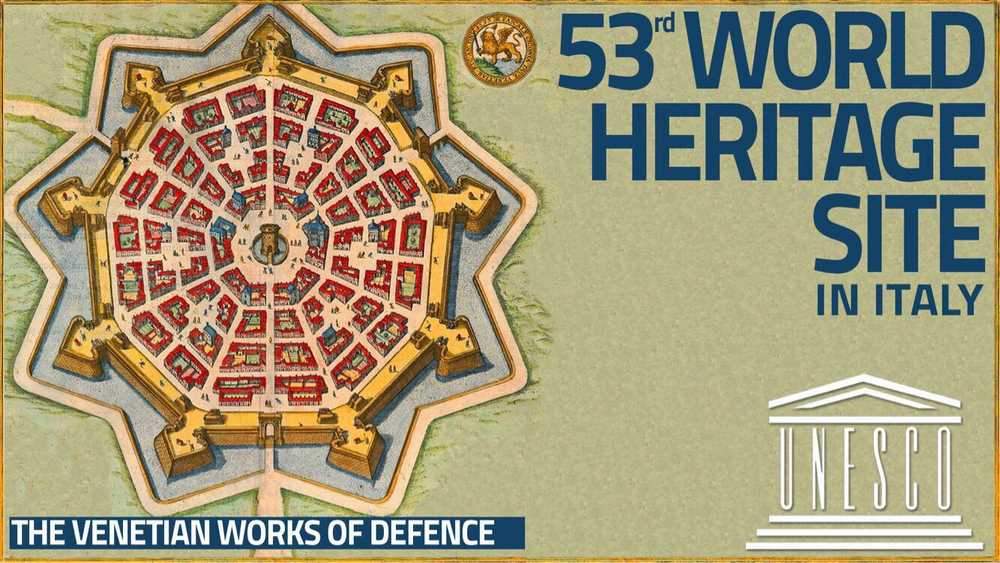Fifty-three Italian sites included in UNESCO’s World Heritage List become fifty-three today. The forty-first session of the World Heritage Committee, which is being held these days in Krakow (it is being held from July 2 to 12), enrolled between yesterday and today two new Italian sites, one naturalistic and the other historical. These are two sites shared with other European nations. The fifty-second is shared among thirteen nations (in addition to Italy there are Albania, Austria, Belgium, Bulgaria, Croatia, Germany, Poland, Romania, Slovakia, Slovenia, Spain, and Ukraine): it is the “Primordial Beech Forests of the Carpathians and other regions of Europe.” This heritage was already inscribed since 2007, but was extended this year to other nations, including Italy: thus the ancient beech forests of Tuscany, Emilia Romagna, Abruzzo, Lazio, Molise, Puglia and Basilicata become part of the UNESCO heritage.
The fifty-third, another transnational site, which Italy shares with Croatia and Montenegro, was confirmed today: these are the “Venetian defense works between the 16th and 17th centuries State from Land - State from Western Sea.” These are the fortifications (six included in the heritage) that the Venetians built between the sixteenth and seventeenth centuries to defend their territories and that form a vast defense system extending from Lombardy (including the walls of Bergamo) to Montenegro along the entire Adriatic coast. “The defensive apparatuses of the Land State (to protect the Republic from the northwestern European potentates) and the Sea State (to defend the sea routes and ports, from the Adriatic Sea to the Levant),” reads the brief description of the new heritage translated into Italian on the website of the Ministry of Cultural Heritage and Activities, “were both necessary to protect the territorial order and power of the Republic of Venice. During the Renaissance, the vast and strategic territory of the Serenissima was the ideal space to support the birth of the bastioned or ’alla moderna’ systems; already conceived as an extended and innovative network, the defense works created by the Republic of Venice are of exceptional historical, architectural and technological importance. The elements of Outstanding Universal Value are many: from the colossal excavation operations for the underground routes, to the construction of complex artifacts that reflect the new construction requirements developed between the 16th and 17th centuries by the Republic’s engineers. Contributing strongly to the value of the site is the landscape context in which the six components are inserted, each able to offer remarkable visual suggestions within its own context; moreover, the elements of the series inserted within pre-existing medieval urban fabrics or affected by interventions traceable to more recent historical periods (from the Ottoman and Napoleonic periods) have clearly maintained their Venetian matrix, and each work still testifies to its tactical function within the overall system.”
The criteria that led to their inclusion in the UNESCO World Heritage List are that “Venetian defense works in the modern style constitute an outstanding testimony to the military architecture that evolved evolved between the 16th and 17th centuries and affected vast territories and their interactions,” and that they “testify to the presence of a unique defensive network between State from Land and State from Western Sea centered on the Adriatic Sea historically known as the Gulf of Venice,” and the fact that the Venetian defense works “present all the characteristics of the fortified system alla moderna (bastion system) testifying to the changes that were introduced subsequent to the introduction of gunpowder.” Moreover, “as a whole, the six elements exceptionally demonstrate the characteristics of a defensive project conceived on the basis of great technical and logistical capabilities, modern combat strategies, and the new architectural requirements applied widely in the defenses of the Stato da Terra and the western sector of the Stato da Mar.”
Satisfaction from Minister Dario Franceschini: “This important result confirms Italy’s strong and long-standing commitment to the implementation of the UNESCO World Heritage Convention. A valuable work that allows our country to maintain the primacy of the number of sites inscribed on the List and to exercise a remarkable role in cultural diplomacy in the international context.”Italy is still the country with the largest number of sites included in the UNESCO World Heritage List (53), immediately followed by China, which has 52.
 |
| Two new Italian sites enter UNESCO's World Heritage List today |
Warning: the translation into English of the original Italian article was created using automatic tools. We undertake to review all articles, but we do not guarantee the total absence of inaccuracies in the translation due to the program. You can find the original by clicking on the ITA button. If you find any mistake,please contact us.